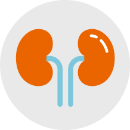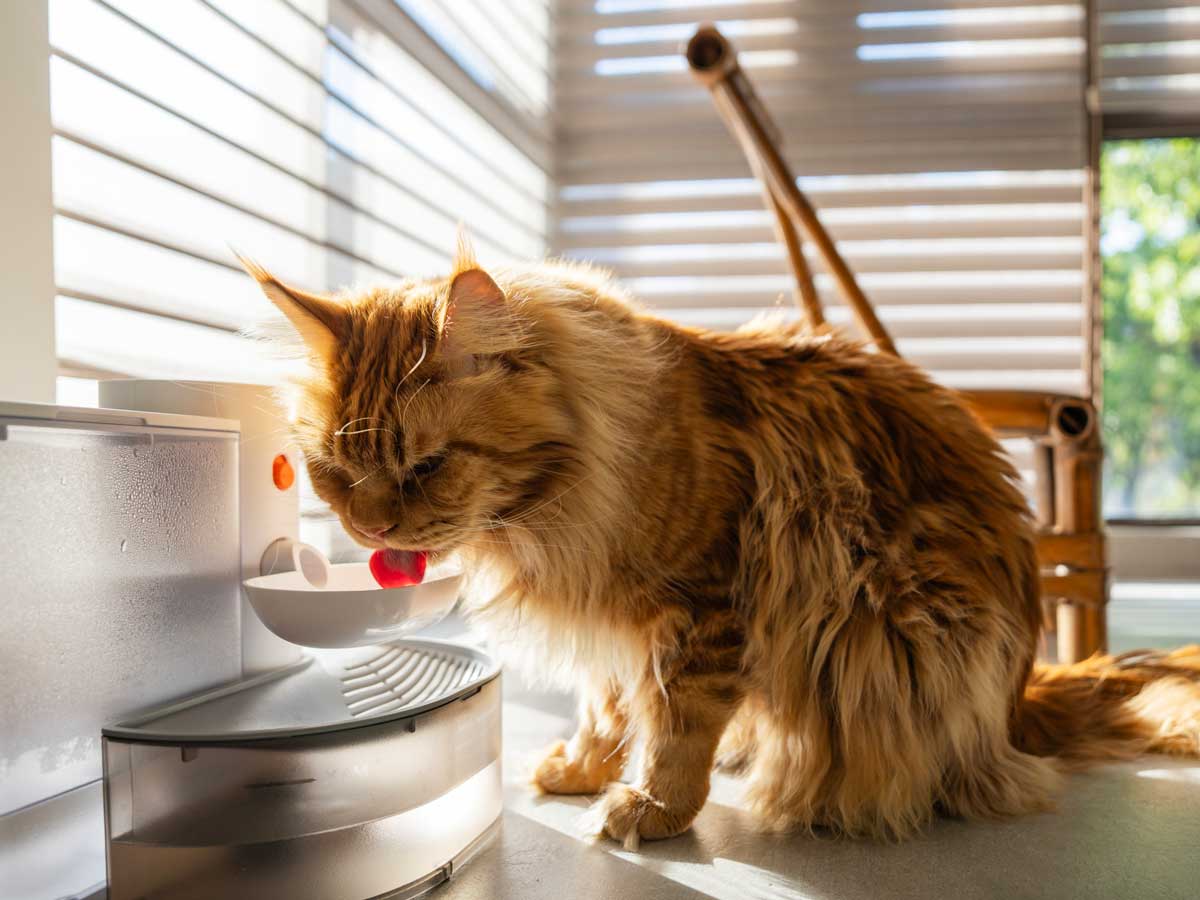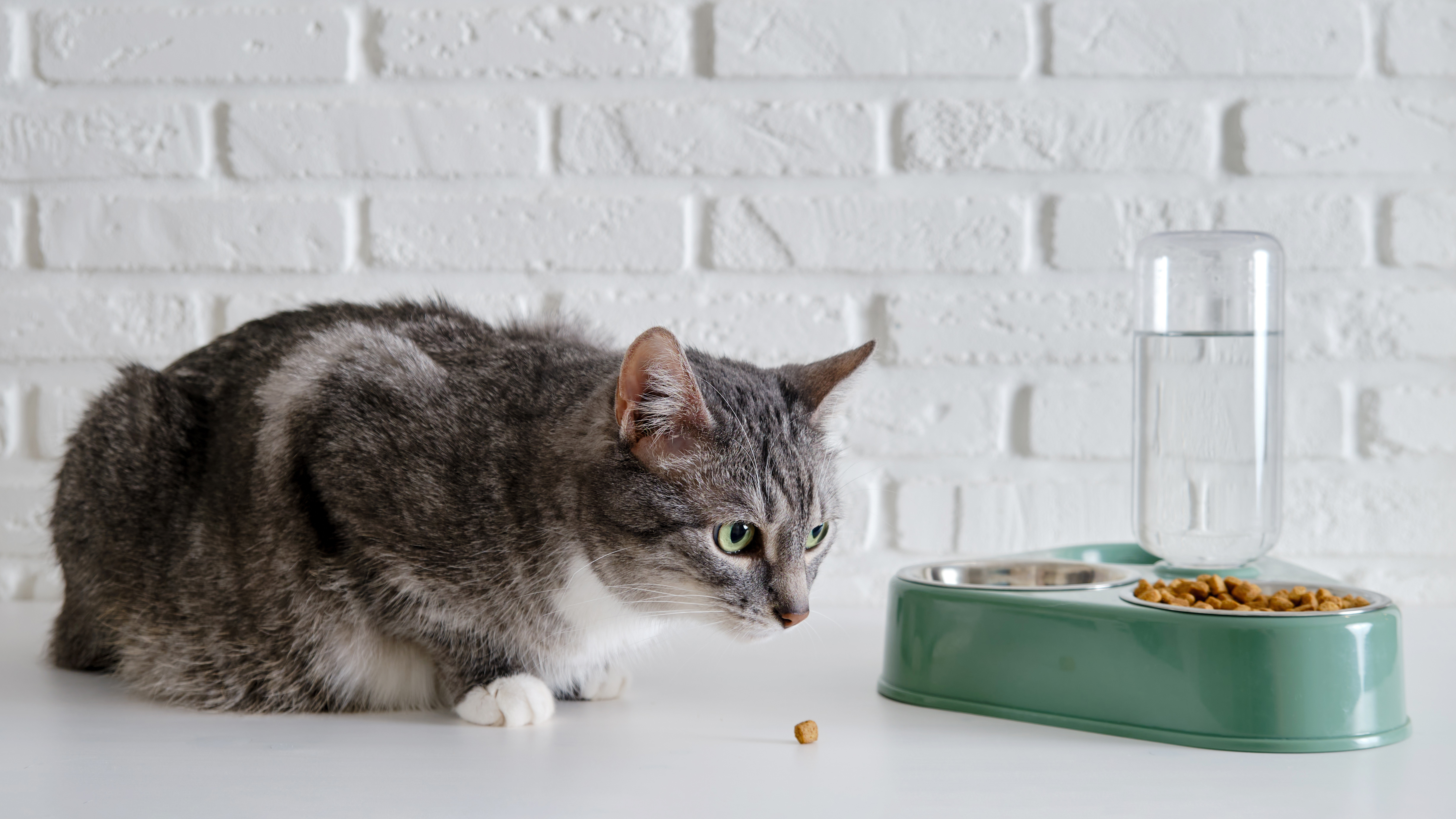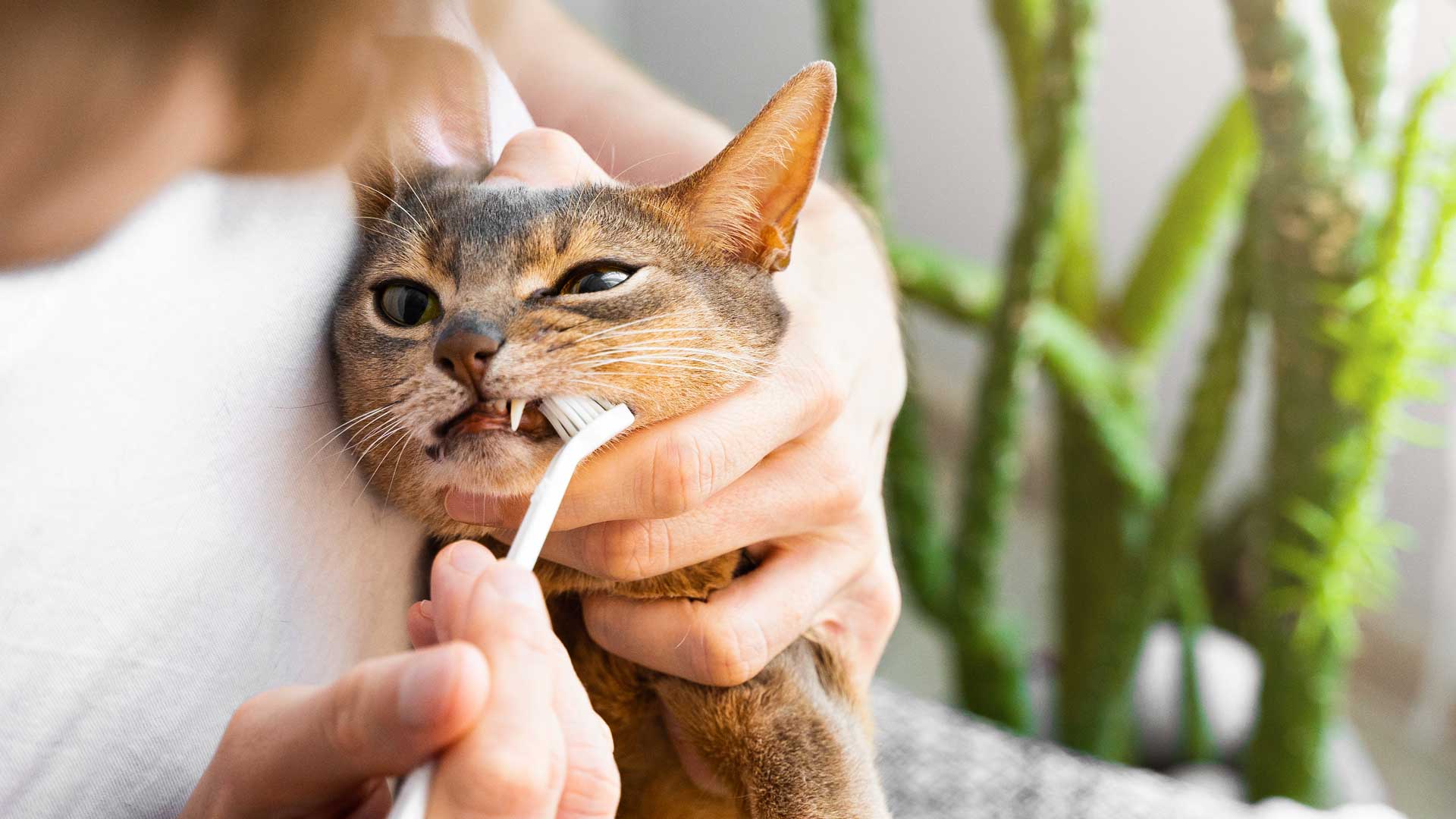kidney problems in older cats and dogs
Proper kidney function is essential for your senior pet’s overall health.
It's not uncommon for senior cats and dogs to have some degree of kidney dysfunction. Learn how to spot signs of a kidney injury or chronic kidney disease.

What your pet’s kidneys do
- Remove waste and toxins
- Maintain red blood cells
- Conserve protein and water
- Balance sodium, potassium, calcium and pH
- Maintain homeostasis
- Process medications
- Regulate blood pressure

What an acute kidney injury can look like in dogs and cats
- Increased thirst and urination
- Loss of control with urine
- Lack of urination
- Blood in urine
- Vomiting
- Lethargy
- Diarrhea
- Bad breath
- Abdominal pain
- Weight loss
- Hypothermia

Signs of kidney disease in dogs and cats
All the above and/or:
- Muscle loss
- Pale gums
- Decreased appetite
- Oral ulcerations
- Constipation
- Vision changes or blindness
Kidneys are key to good health in dogs and cats!
Your pet’s kidneys are multitalented. They help rid the body of nasty toxins, keep blood in check, and so much more. They’re linked to just about every organ system in the body and play a huge role in determining your pet’s overall health.
Access to fresh, clean water is a big part of good kidney health — make sure your pet always has lots of it available.

What puts older pets at risk for kidney disease?
- Older age
- Chronic dehydration (especially in cats)
- High blood pressure
- Dental disease
- Exposure to toxins
- Previous kidney infection or urinary tract issues
- Genetic predisposition (in certain breeds)
Keep kidney infections and injuries away
Kidney issues are most common in older dogs and cats but can be found in pets of any age. It’s important to take immediate action if you notice any signs of distress.
Signs of kidney problems in dogs and cats
The number one sign of kidney dysfunction is changes in urination pattern, frequency, and/or amount. Your furry friend may also have issues with vomiting, diarrhea, energy, or a swollen, sore stomach.
For senior cats: Weight loss, vomiting, bad breath, oral ulcers, increased thirst, decreased appetite, etc.
For senior dogs: Accidents in the house, lethargy, blood in urine, swelling, vomiting, etc.
Pyelonephritis is a pain
Pyelonephritis is a bacterial infection of the kidneys that often starts in the bladder. Your senior pet is at higher risk for infection if they experience kidney stones or recurring urinary tract infections, or if they’ve been diagnosed with diabetes or Cushing’s disease. Treatment typically involves an antibiotic prescribed by your vet.
Other kidney concerns in senior pets
Your dog or cat can also experience kidney damage from ingesting toxins (such as lilies for cats and antifreeze for dogs and cats) or being extremely dehydrated. If any of these apply and/or your pet is exhibiting symptoms, take them to a vet as soon as possible.
Kidney issues can lead to chronic kidney disease
Chronic kidney disease (or CKD) is prolonged kidney dysfunction that generally results in irreversible damage. Chronic kidney disease is also sometimes referred to as kidney failure, renal failure, or renal insufficiency. Kidney disease is more common in cats than dogs.

What causes chronic kidney problems in dogs and cats?
Causes of kidney problems can be directly or indirectly related to the performance of the kidneys. These include:
- Dehydration
- Hemorrhage
- Congenital diseases
- Feline leukemia
- Feline immunodeficiency virus (FIV)
- Leptospirosis
- Tick diseases
- Ingested toxins or nephrotoxic injury (from drug or toxin)
- Immune-mediated disease
- Inappropriate diets
- Chronic disease
- Congestive heart failure
- Interstitial damage (from allergic reaction or infection)
- Vascular damage
Signs and diagnosis of chronic kidney disease in dogs and cats
Chronic kidney disease presents the same symptoms listed earlier, as well as oral ulcerations, constipation, vision changes, a decreased appetite, and pale gums.
Diagnosis (and treatment) of kidney disease requires monitoring blood work and urine testing.
Stages of kidney disease
Once a dog or cat receives a diagnosis of chronic kidney disease, a vet will rate the severity of the disease. This staging is typically based on SDMA (symmetric dimethylarginine) and blood creatine levels — both important gauges of kidney function.
Stages range from 1 to 4 and help determine the proper treatment and prognosis for your pet.
Treatment for chronic kidney disease
If you suspect your senior pet has a problem with their kidneys, please take them to a veterinarian ASAP. Also, make sure your regular veterinary visits include evaluations to identify kidney disease in its earlier stages. Early intervention provides them with a stronger chance of feeling better sooner.
To determine the cause of your pet’s symptoms, your veterinary team will most likely perform a thorough examination, run blood work, and recommend a urinalysis. They may also recommend a urine culture and imaging (radiograph or ultrasound).
If kidney disease is confirmed, your vet will put together a treatment plan for your pet. This may include fluid therapy, a therapeutic kidney diet, medication, and frequent monitoring.
Medically reviewed by Ari Zabell, DVM and Heidi Cooley, DVM.
Custom care that grows with your pet
You can save more than 30% by bundling your pet’s preventive care with an Optimum Wellness Plan. On top of comprehensive exams, vaccinations, and diagnostic testing, these convenient packages also include unlimited office visits, 24/7 Pet Chat™, discounts on most Banfield products, and more.
Our NEW Senior Care Optimum Wellness Plan includes our most in-depth diagnostic testing yet. This helps us detect changes in organ function and overall physical health, so that we can begin any recommended treatment as soon as possible.

Senior Care
Designed to help detect early signs of age-related illness
This plan combines essential services like vaccinations and exams with in-depth diagnostic testing.
See what’s included in Senior CareSenior Care Plus
Designed to help detect early signs of age-related illness and support additional dental needs
This plan includes all the services in our Senior Care plan plus a dental cleaning.
See what’s included in Senior Care Plus Mites and mange
Mites and mange Podcast - Not Just Fluff
Podcast - Not Just Fluff





